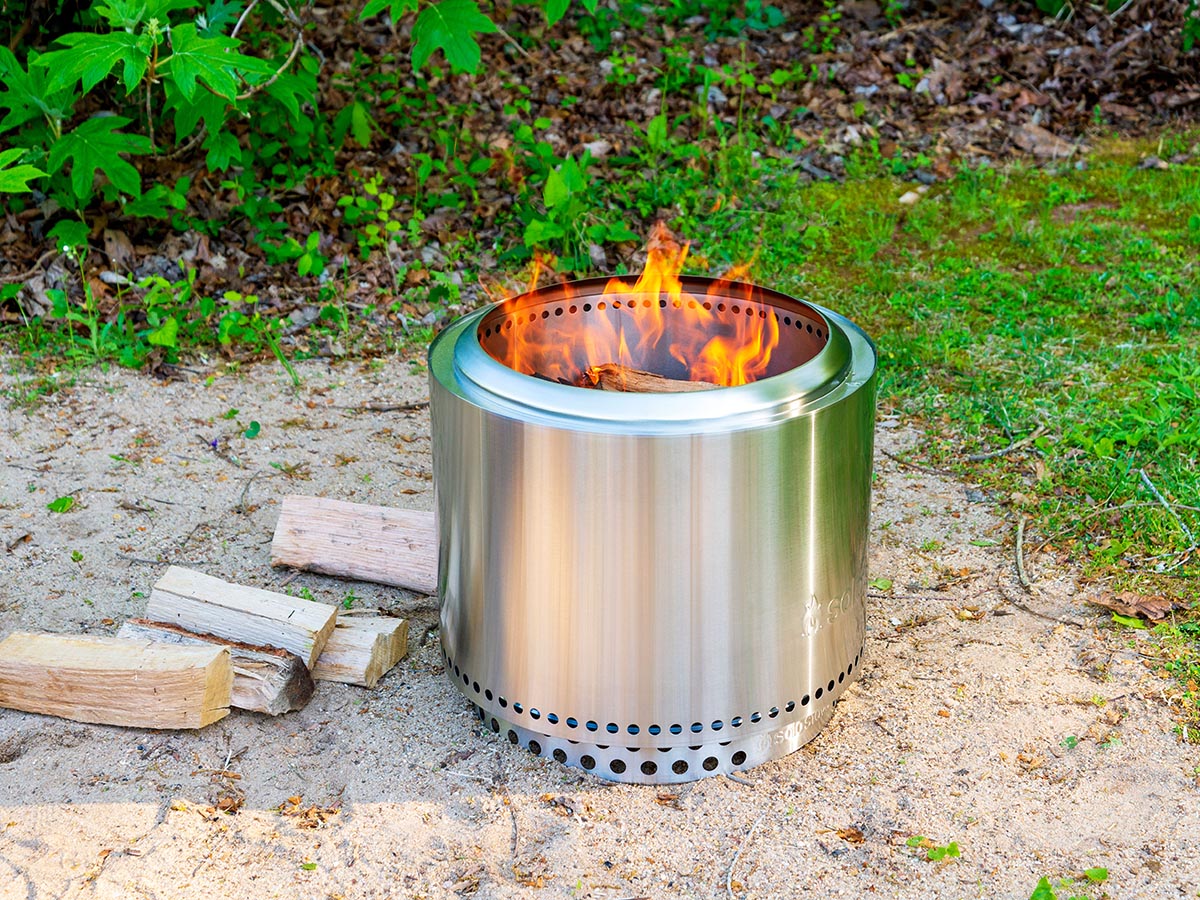We may earn revenue from the products available on this page and participate in affiliate programs. Learn More ›
Spending an evening outdoors by the warm glow of a campfire is a great way to unwind with family and friends. But before that can happen, one has to find a safe location and then exert significant effort to build the fire. The relaxing ambience comes after those tasks are accomplished, which, unfortunately, is often accompanied by copious amounts of drifting smoke. Solo Stove claims to offer a better experience.
The popular Solo Stove Bonfire is a wood-burning fire pit that promises to resolve campfire issues by providing a safe and portable place to quickly build a smokeless fire and is easy to use in the backyard or while camping. If you’ve been thinking about buying one but want to know more, keep reading. I tested the Solo Stove Bonfire over the course of 3 months to find out if it would live up to the hype. Quite frankly, it performed better than I expected.
Solo Stove Bonfire: At a Glance
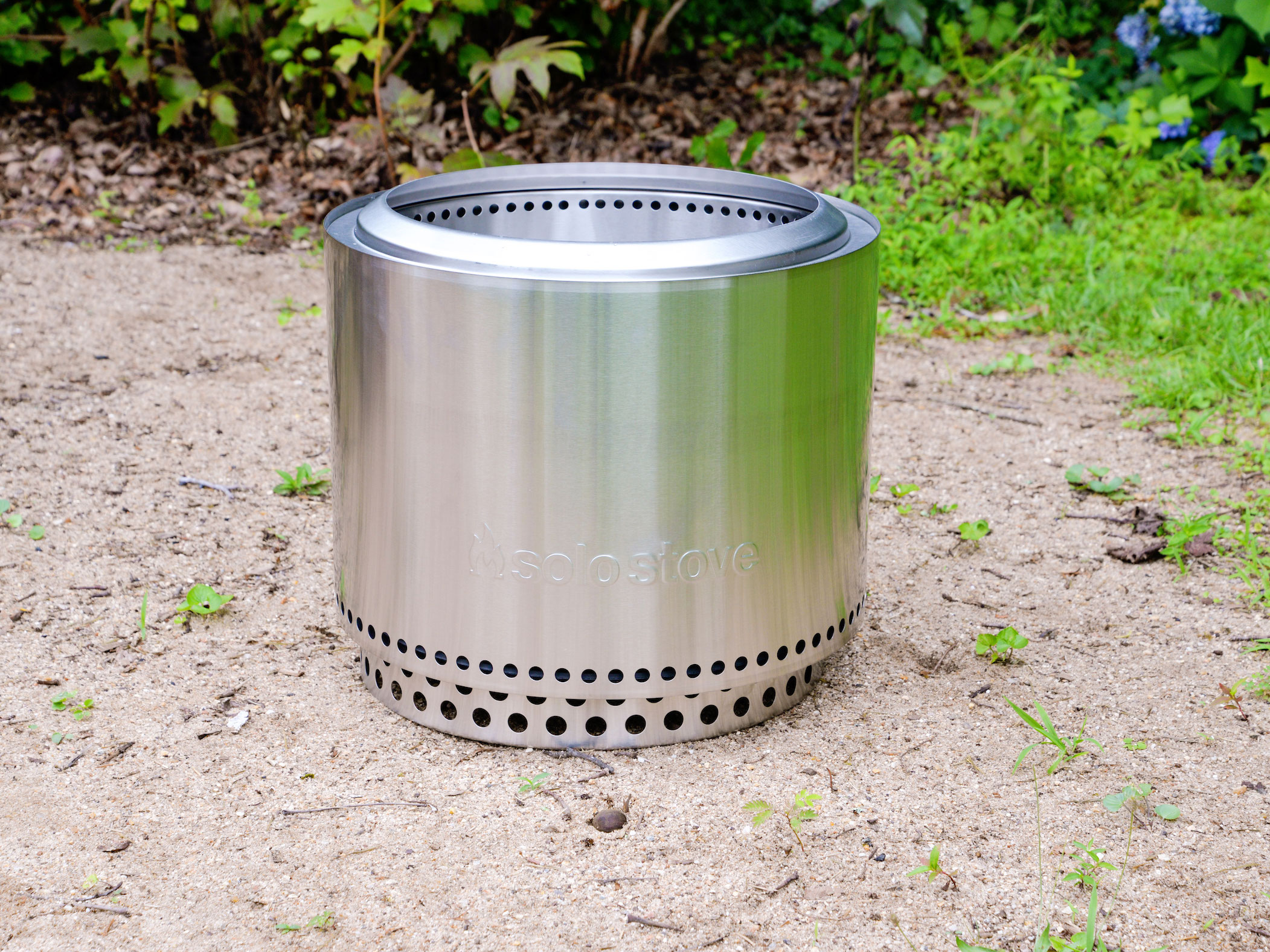
Rating: 9.5/10
PROS
- Durable 304 stainless steel construction
- Fast and easy to light
- Extra-bright flame
- Burns almost entirely smoke-free
- Leaves behind very little ash
CONS
- Burns more firewood faster than other fire pits
- Somewhat cumbersome to empty the ash
- Must be covered when not in use
Get the Solo Stove Bonfire at:
- Amazon for $259.99
- The Home Depot for $267.79
- Ace Hardware for $299.99 (stand included)
- Solo Stove for $219.99
What is the Solo Stove Bonfire fire pit?
The Solo Stove Bonfire is engineered for durability, portability, and to burn smoke-free. It is constructed of 304 stainless steel for a combination of high strength and resistance to rust and corrosion. It features a dual-wall design and a slightly elevated fire grate that dramatically improves airflow, minimizing smoke while the fire is burning and eliminating much of the ash and charcoal to be cleaned out afterward.
Solo Stove offers three similarly designed fire pit models: the Ranger, the Bonfire, and the Yukon. The Solo Stove Bonfire is the midsize model, measuring 19.5 inches in diameter and 14 inches high; it’s ideal for up to five people to sit around within a comfortable distance. It weighs just 20 pounds, so it’s easy to pack up and take along to the beach, camping, tailgating, or just about anywhere else. When the fun is done, and the fire has burned out, just turn it over to dump out the cold ashes before storing the fire pit out of the weather.
The Bonfire base package includes the one-piece fire pit body, flame ring, and a heavy-duty drawstring carry case. The one I tested came with two accessories: a stand, which makes it safe to set up on heat-sensitive surfaces, and a heat deflector that directs more of the fire’s warmth toward those seated nearby. Other Solo Stove Bonfire accessories sold separately include:
- Shield—adds safety against flying sparks
- Shelter—soft cover keeps rain and debris out of the fire pit when it’s not in use
- Lid—converts the fire pit to a table
- Handle—for easy, one-handed transport
- Station—to neatly store the fire pit and firewood
- Fire pit tools—help users tend the fire
How easy is the Solo Stove Bonfire to assemble?
Assembling the Solo Stove Bonfire fire pit could hardly have been easier. The fire pit body is one solid piece. Simply place it on a safe level surface at least 6 feet away from buildings or other combustible surfaces, with 20 feet of overhead clearance. Pavement, sand, or dirt make great bases. If you plan to set it up on a temperature-sensitive surface like a wooden deck or grassy area, be sure to buy and use the stand. The stand is simply a steel mesh ring that elevates the fire pit about 4 inches off the ground. With the fire pit body in place, the only thing left to do is to place the flame ring on the rim.
How to Use a Solo Stove Bonfire
I built my fires in the Bonfire the same way as I would in any other wood-burning fire pit: I lit a generous amount of fine dry tinder to get the fire started, added kindling to strengthen the flame, then gradually added larger pieces of firewood as long-burning fuel. Alternatively, commercially available fire-starter logs can be used as well. The Bonfire fits firewood logs up to 16 inches long, but 12-inch logs seemed to work better. I found that the shorter-length logs were easier to position and allowed me to fill the burn chamber more efficiently.
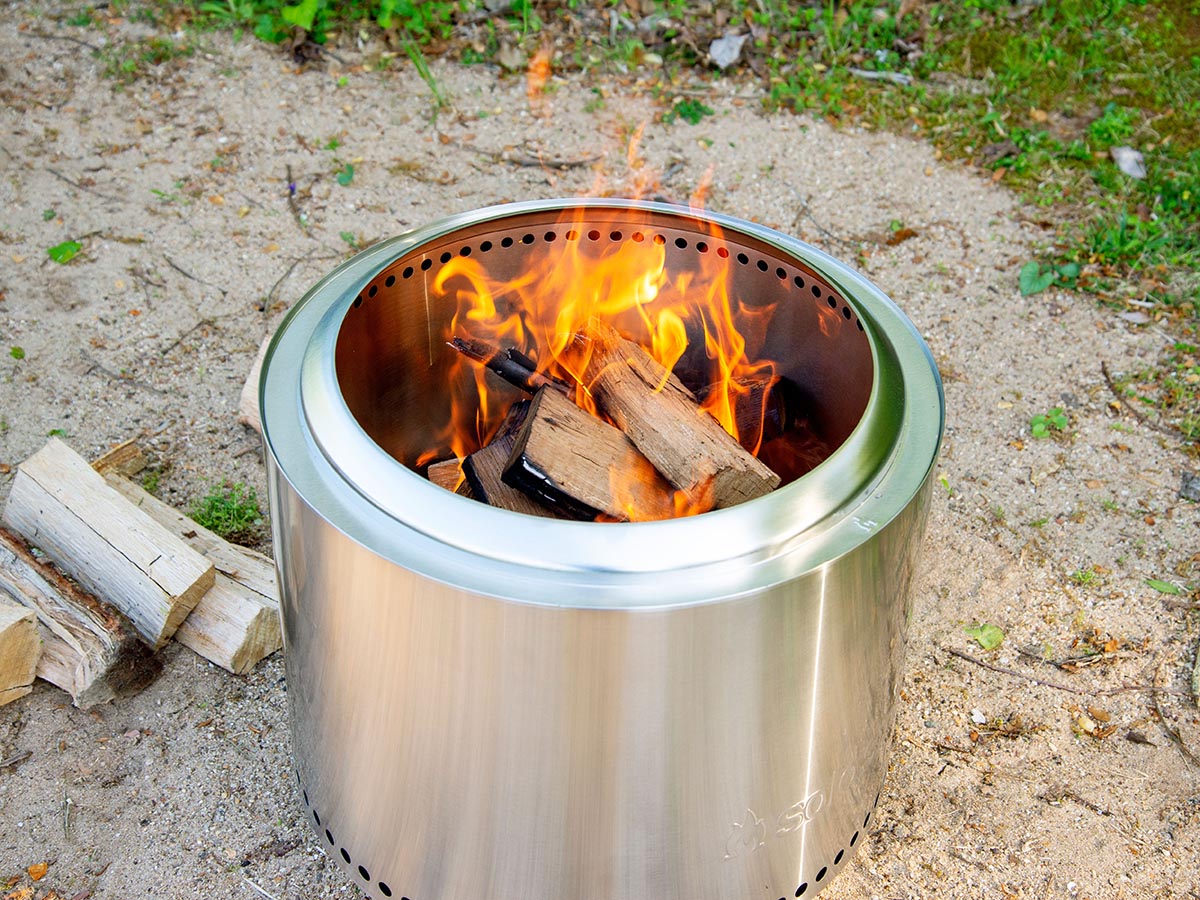
Can you use a Solo Stove Bonfire on a deck?
By itself, the Solo Stove Bonfire should not be used on flammable or temperature-sensitive surfaces. In order to set it up on a deck, the deck surface needs to be protected from the heat. The fast and easy way to do that is with the Solo Stove Bonfire stand. The stand is included with some Bonfire packages and is also available for purchase separately. I did not use the Bonfire on my deck, but I did set it up using the stand in a corner of my lawn. After a 3-hour fire, I saw no apparent damage to the grass.
What can you burn in a Solo Stove Bonfire?
The Solo Stove Bonfire is a wood-burning fire pit. It is compatible with all kinds of natural firewood logs up to 16 inches long. Dry, well-seasoned firewood that has aged for at least 6 months works best. Hardwoods like oak, hickory, and maple burn longer and cleaner than softwoods such as pine. Manufactured compressed-fiber fire starters and fuel like Duraflame fire logs may be used in Solo Stove fire pits, but they may produce more smoke than traditional hardwood firewood.
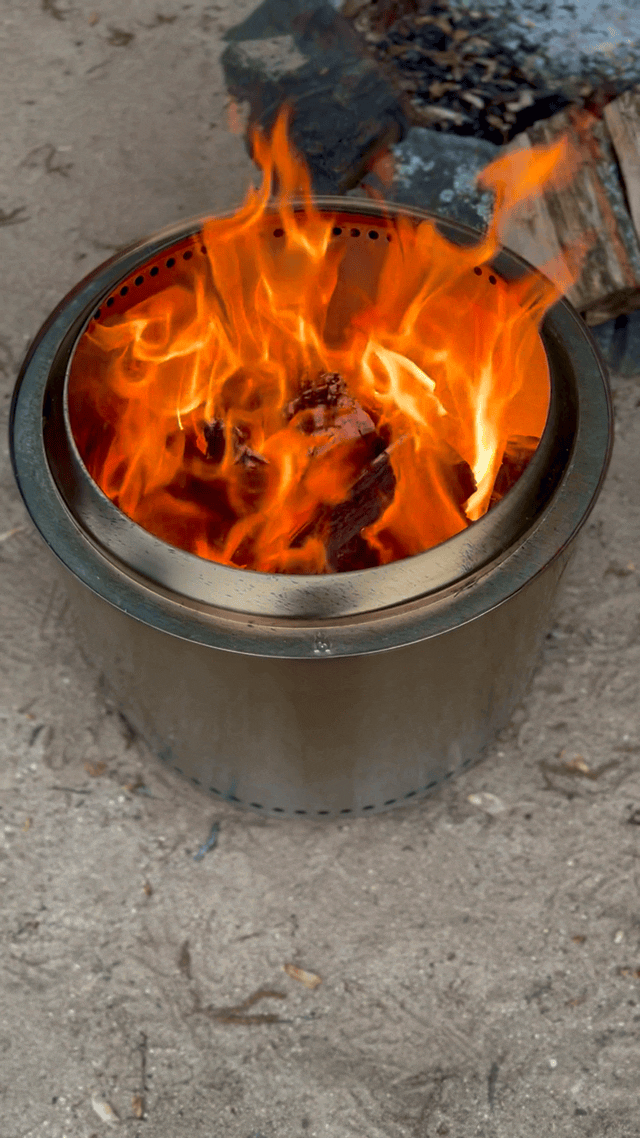
How much heat does a Solo Stove Bonfire give off?
The Solo Stove Bonfire fire pit produces a lot of heat. The same design features that make it burn cleaner and more efficiently than other fire pits also make it produce more heat than other fire pits. The air that flows up between the walls and beneath the elevated fire grate lets the fire consume the firewood more completely. I noted that it took between 5 and 10 minutes to get the fire burning to the point where I could add full-size firewood logs and that once I filled the burn chamber to capacity, it burned for around 2.5 hours without me needing to add more wood. Because the Solo Stove offers such an efficient and long-lasting burn time, users should consider these two important issues: heat deflection and fire pit safety.
More heat doesn’t necessarily mean much if it is lost in the atmosphere. In the summertime that may be fine, but in cool weather, capturing that warmth for a toasty fireside experience is essential. The heat deflector is a stainless steel, saucer-shaped device that simply stands on the rim of the fire pit. It redirects rising heat outward toward those seated nearby.
Regarding safety, it is important to use caution around this fire pit. The stainless steel sides become dangerously hot to the touch, so be sure to eliminate any trip hazards in the area and allow ample clearance between the fire pit and fireside seating. Once the fire is burning, it should be allowed to burn out completely. After the fire is completely out, the Solo Stove can be handled, if necessary.
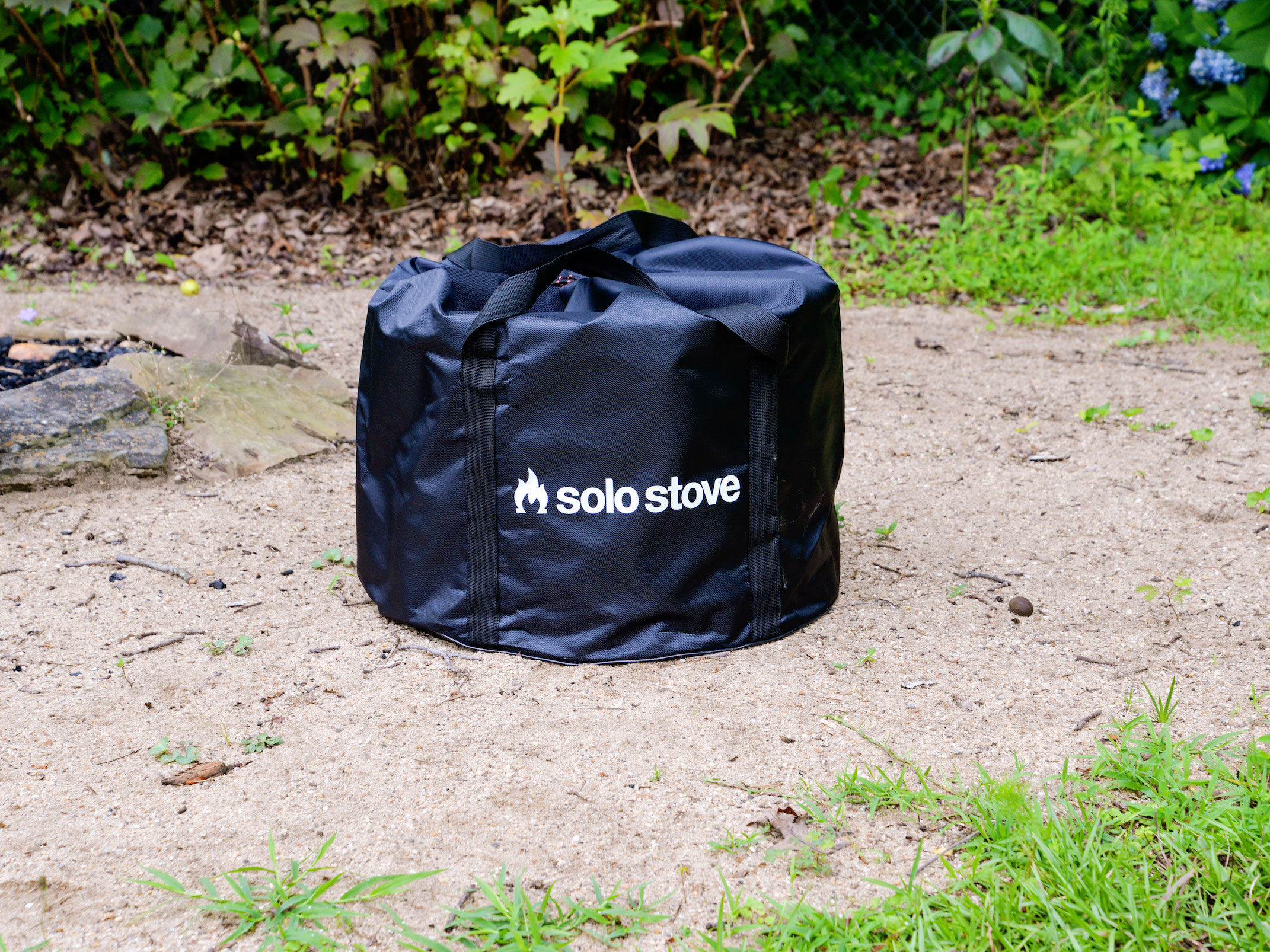
How does the Solo Stove Bonfire work?
The dual-wall design is the key to the Bonfire’s smokeless burn. The outer and inner walls of the fire pit have about an inch of air space between them. Outward-facing intake holes surround the base of the outer wall, and inward-facing vent holes ring the top of the inner wall. When a fire burns inside the fire pit, the wall configuration creates a convection current. As the air pocket heats, expands, and exits the upper vent holes, it pulls in fresh, cool air at the base.
Superheated oxygen-rich air leaving the upper vent holes ignites smoke particles coming off the burning wood before they have a chance to exit the fire pit. This “secondary burn” creates a bright flame at the fire pit rim above the burning firewood as it eliminates most of the annoying wafts of smoke.
Initially, after a fire is first lit, the Bonfire fire pit gives off some smoke until the larger firewood starts to burn in earnest and the air pocket between the dual walls heats up. Once the fire “matures,” almost no smoke is detectable at all. Then, as the fire burns down and the air inside the walls cools, it again gives off some smoke. I found that burning seasoned dry hardwood firewood and feeding the fire only one or two logs at a time was the best way to maintain a smokeless fire.
Is the Solo Stove Bonfire worth it?
The Bonfire fire pit is priced under $300, including the carry case and stand. That price is higher than most wood-burning fire pits that give off smoke and are made of lower-quality materials, and it’s lower than the price of most gas fire pits. Built-in fire pit kits run from about $150 to $500 and require a permanent location and labor-intensive assembly. For most users, the Bonfire offers a combination of convenience, durability, and comfort that the other options do not.
This fire pit is easy to assemble and use, mostly smoke-free, built of extremely durable materials, and offers tons of versatility, especially when the available accessories are considered. In my opinion, the Solo Stove Bonfire is definitely worth the money.
Should you buy a Solo Stove Bonfire fire pit?
For those who want a durable and attractive low-smoke fire pit for entertaining up to five guests, the Solo Stove Bonfire makes a great choice. This wood burner is easy to transport and set up, it’s mostly smoke-free, and it’s built to last. It took top honors in our roundup of the Best Smokeless Fire Pits of 2022, with only the Cast Master Bon 2000 even coming close in terms of overall functionality. The two are similarly constructed, but the Bonfire is lighter in weight and easier to transport, less expensive, and offers more versatility thanks to its numerous accessories.
Those in need of either a larger or smaller fire pit may want to take a closer look at the Bonfire’s sister models. The compact Solo Stove Ranger measures 15 inches in diameter by 12.5 inches high, while the larger Solo Stove Yukon measures 27 inches in diameter and 17 inches high. All of these Solo Stove fire pits share the same efficient smokeless design and heavy-duty 304 stainless steel construction. You can’t go wrong with any of them.
Where to Buy the Solo Stove Bonfire
Get the Solo Stove Bonfire at:

